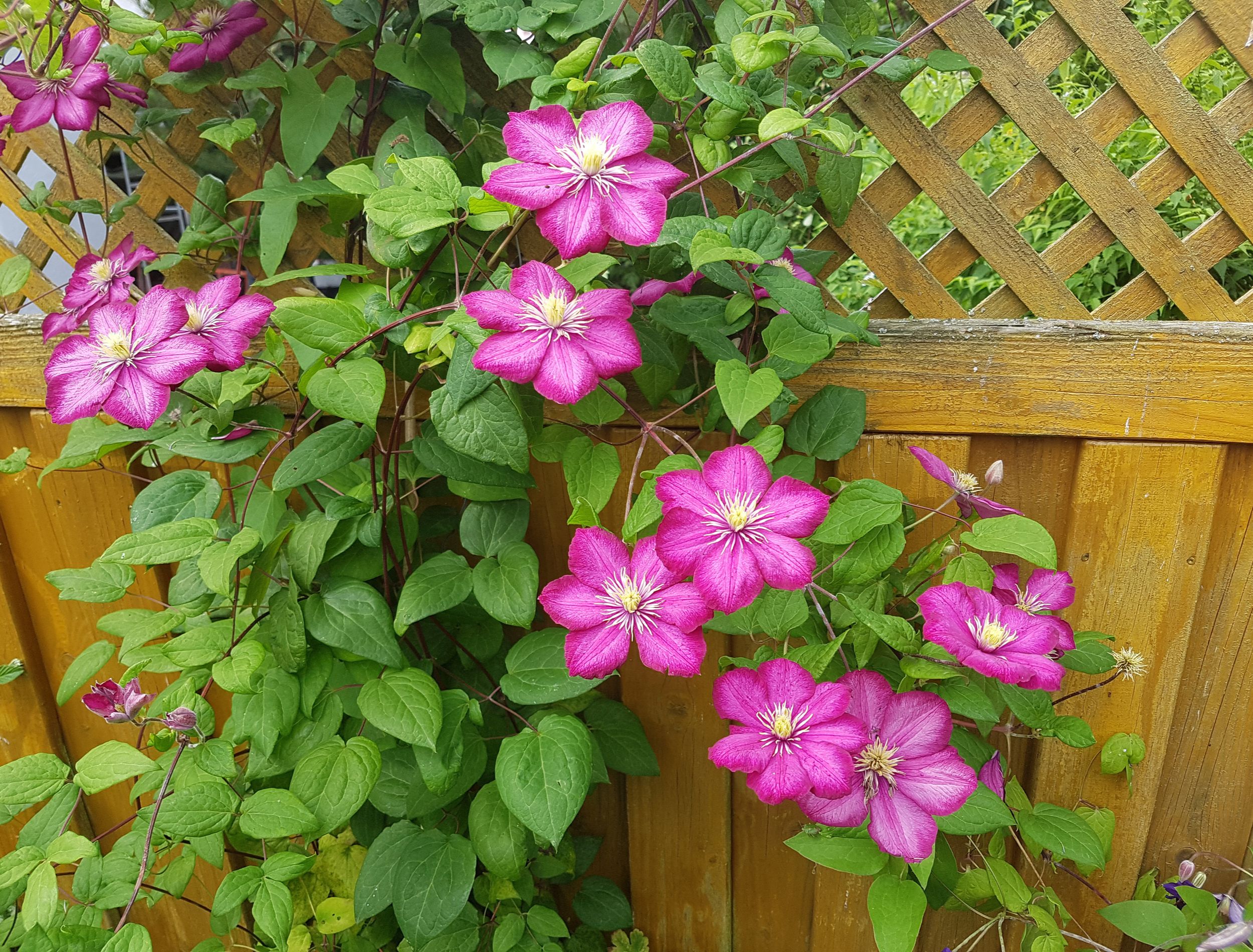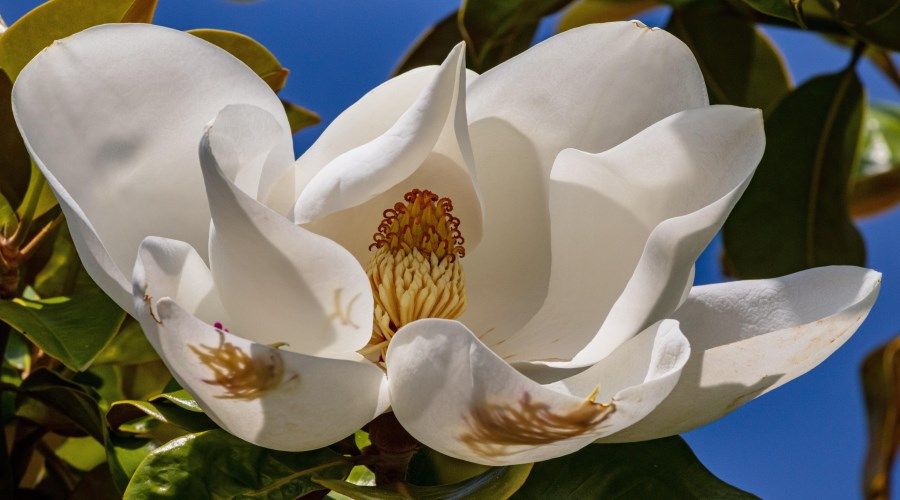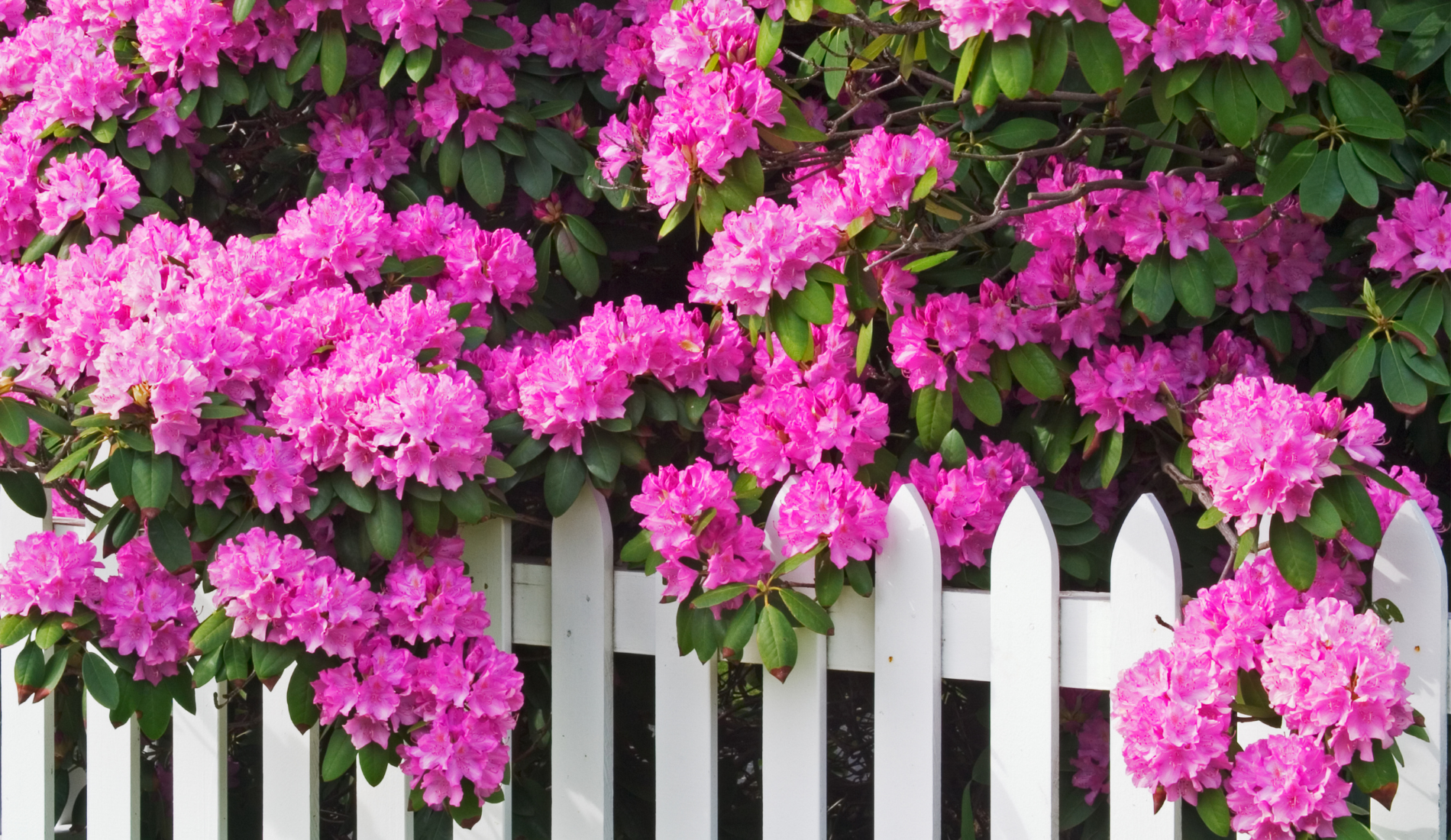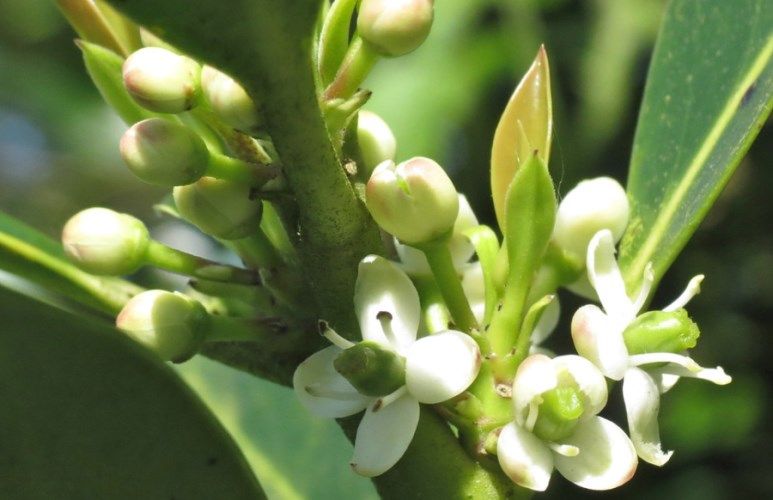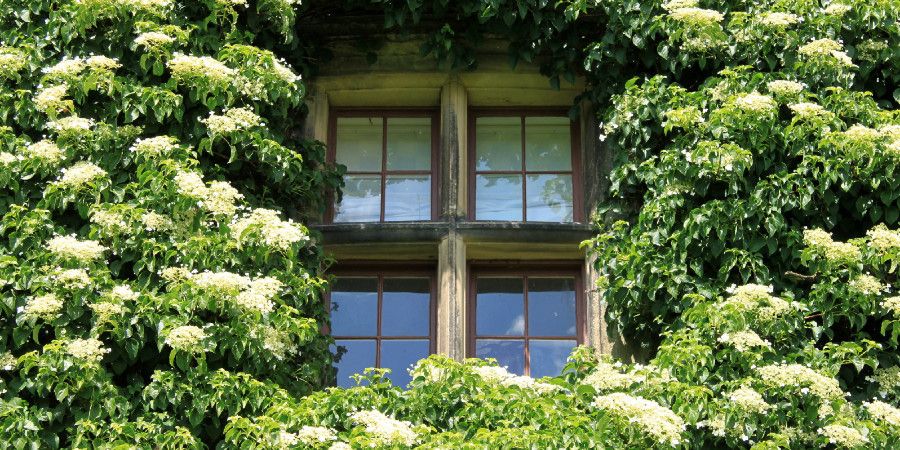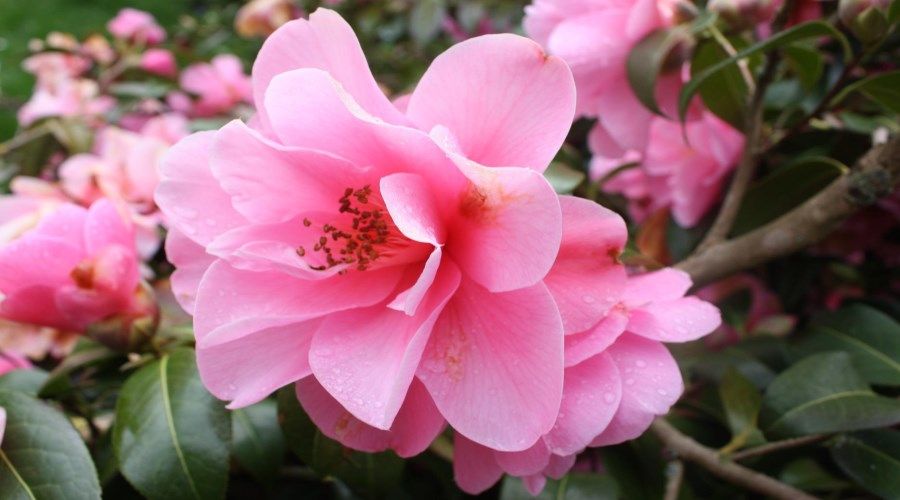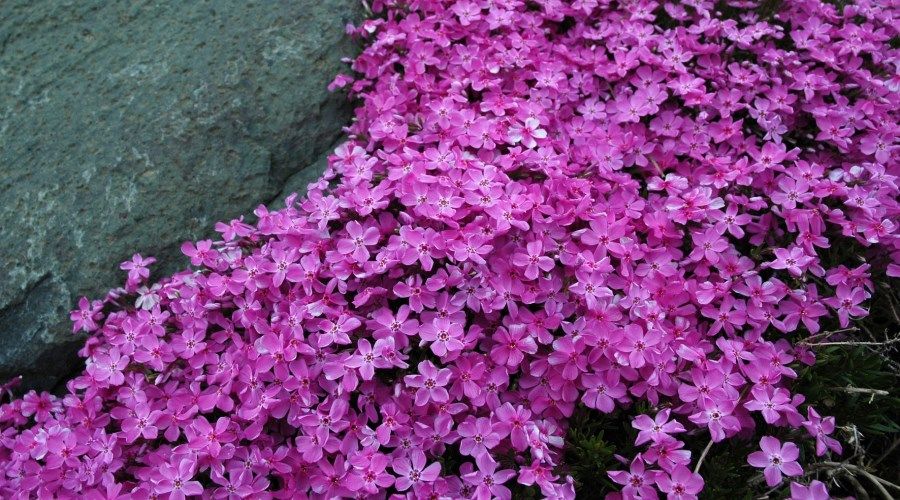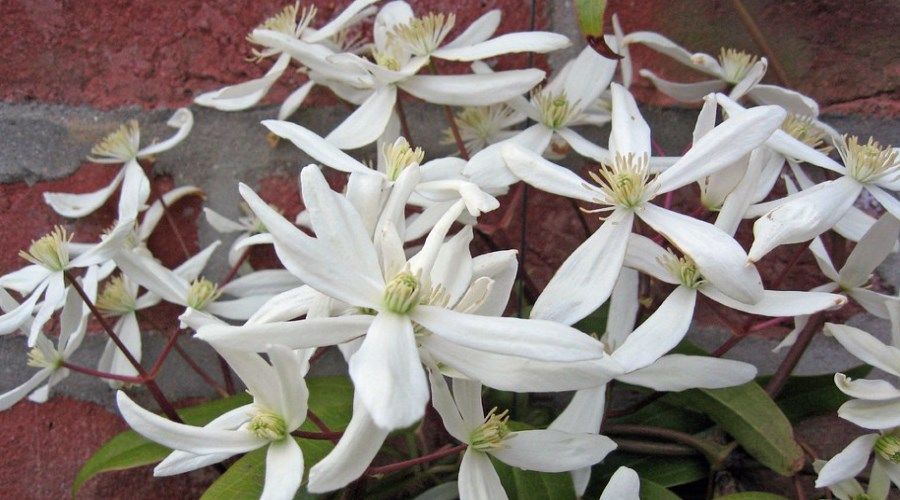Color in the garden all year long is every gardener’s desire and delight. Evergreen flowering plants unfailingly rise to the occasion. Their green leaves break up the monotony of a wintry landscape. In spring, summer, and fall, their blossoms in bright pinks, purples, whites, and yellows bring your garden to life. Bedazzle your backyard with these eight beloved choices.
EVERGREEN MAGNOLIA
Image credit: Gary J Stearman via Unsplash
Also known as Magnolia grandiflora, or Southern Magnolia, it is native to the southeast and is one of the most popular evergreens in North America. Some varieties bloom excessively when they’re young, while others take many years before yielding a single flower. Their cup-shaped flowers with a creamy color and light lemony scent pop up between June and November.
Evergreen magnolias can grow to 80 feet and span 40 feet wide, making them perfect shade trees. They thrive in a variety of soil types and prefer well-watered, sunny spots. For smaller yards, consider dwarf varieties like Little Gem or Kay Parris.
RHODODENDRON
Image credit: dndavis via Canva
With about 1000 species — 27 of them native to North America — rhododendron is a popular choice for round-the-clock color. Gardeners love it because it is low maintenance and can live well past 100 years. While their green leaves hang around all year, in spring and fall you will be treated to bursts of large purple, yellow, and pastel pink blossoms with intoxicating fragrances.
Some of these flowering plants grow only about a foot high, so they’ll fit right in as floral hedges. Taller rhododendrons can reach 70 feet or more. They prefer partial shade and soil that is acidic, moist, well-drained, and rich in organic matter.
LILAC
Image credit: toomler via Canva
Few flowers are more anticipated in spring than the lilacs. Their clusters of cone-shaped blooms in lavenders, pinks, and whites also fill your garden with a heady, lingering perfume. Not surprisingly, these evergreen flowering plants are popular with hummingbirds, bees, and butterflies. So, if you want to attract more wildlife, lilacs are an excellent choice.
Lilacs grow as big as 15 feet high and 12 feet wide. Plant them in an area with full sun, slightly alkaline soil, and good drainage. For more blooms, remove faded or spent flowers (deadheading) and prune lightly after they finish blooming in late spring.
ENGLISH HOLLY
Image credit: Jamie McMillan via Openverse
English hollies (Ilex aquifolium) are instantly recognizable for their bright red berries and deep green, glossy and spiky leaves. These Christmas and winter icons also produce greenish-white flowers when they are about four or five years old. The berries come from female plants that have been pollinated by a male plant. So, for your female holly to bear fruit, a male plant must be nearby.
At full height, English holly plants are about 30 or 40 feet. However, you can prune and trim them to create a lush, full hedge. They are quite tolerant, but they do best in well-draining soil and partial or full sun. Extreme heat is a no-no.
HYDRANGEA SEEMANNII
Image by Mike Finn on Flickr
Also known as Seemann’s Hydrangea, this woody evergreen is native to Mexico. It sprouts roots that allow it to cling, climb and twist its way up surfaces like fences and walls. It can even wind around other plants to create quite a spectacle in your garden.
After about the first year, these flowering plants produce clusters of fragrant blossoms that come in white and creamy colors. Blossoms appear around late spring or early summer and last until August.
Hydrangea seemannii grows to about 30 feet tall and 10 feet wide. They do well in most types of soil but need moisture and good drainage. They tolerate full sun, but a spot where it’s sunny before noon and shaded in the afternoon is better.
CAMELLIA
Image credit: Mekatrig via Pixabay
For tea lovers, the name Camellia (as in Camellia sinensis) is pure bliss. However, there are more than 250 species of camellia. The two varieties gardeners love to grow across the country are Camellia japonica, or Japanese camellia, and Camellia sasanqua, or sasanqua camellia.
These evergreen plants shower your garden with flowers in late autumn, winter, and spring. Popping up in single or double blossoms, the flowers can be striking shades of pink, lavender, red, white, yellow, or multicolored.
Sasanqua camellia grows to roughly 12 feet tall and 10 feet wide when it is mature, while Japanese camellia reaches 20 feet tall and 10 feet wide. A dwarf sasanqua camellia variety grows to 4 or 5 feet high. Both varieties are most at home in rich, moist, acidic soil and partial shade. They also grow well in pots.
CREEPING PHLOX
Image credits: icbits via Pixabay
Looking to kick your ground cover up a notch? Plant some creeping phlox (Phlox subulata) and watch your garden turn into a kaleidoscope of vibrant colors — blue, pink, red, lavender, purple, white, or a mix, like blue-purple. Also known as flowering moss, or moss phlox, its flowers appear between late April and May.
Creeping phlox grows to about 6 inches tall. It flourishes in zones 3 and 9 and can tolerate moderate drought. You might be able to get a second blooming by shearing the plant back after the first time it flowers.
CLEMATIS
Image credit: Old_Man_Leica via Openverse
For livening up walls, fences, trellises, or pergolas, this climber is a keeper. Evergreen or semi-evergreen, clematis is low maintenance and grows quickly. Winter flowering clematis (Clematis cirrhosa) produces flowers that are usually white or off-white from December to March. The flowers add extra eye appeal when they droop and hang like bells. Snowdrift (Clematis armandii) has star-shaped, sweetly scented flowers.
They do well in partial sun and soil mixed with rich organic compost. Avoid keeping them in waterlogged conditions. If you must prune a clematis, do it in early spring or later summer after it flowers.
THESE LOVABLE EIGHT AWAIT
Evergreen flowering plants tick so many boxes, from injecting color year-round to providing shade, brightening up ground cover, and decorating garden structures. Do you have a favorite? Be sure to let us know.

